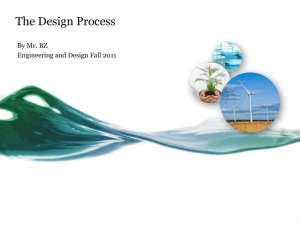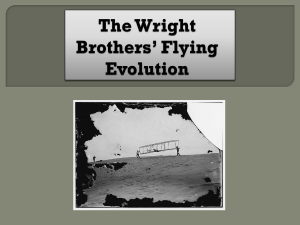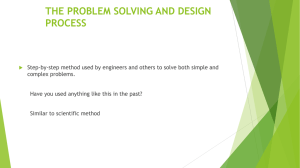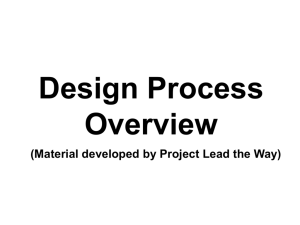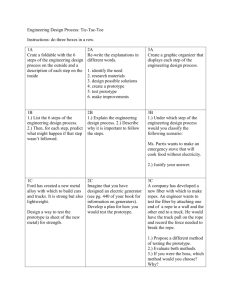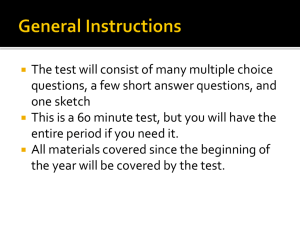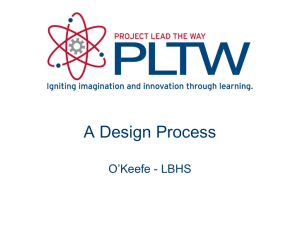InEd dp1 ideate
advertisement
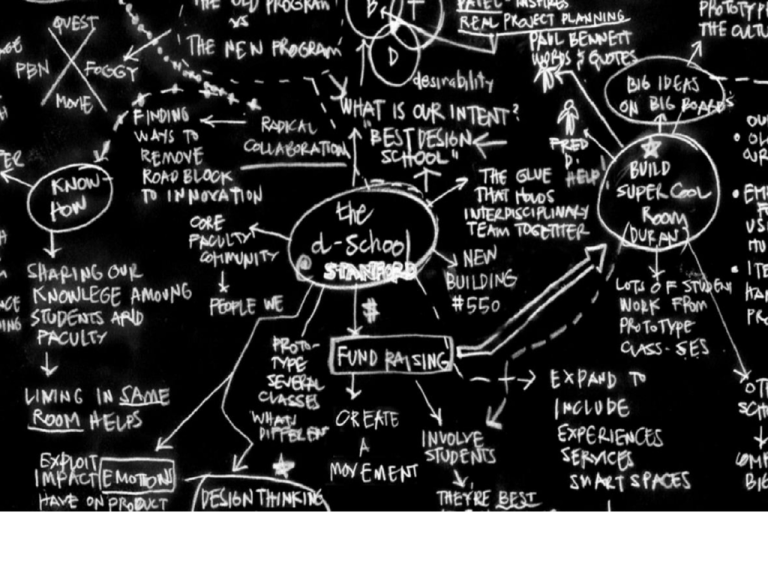
“So, we're actually going to start failing more often now. We're going to divide up into two teams and experiment with our materials. Each team will have different ideas. And each team will probably experience lots of little failures; but that's how we'll learn. And that's how we'll create a more meaningful design.” Read more here. NTLB Grading Breakdown 20% Dp1 40% Dp2 40% Participation - attendance - reading WHY brainstorm generate maximum innovation potential in a short amount of time incorporate different perspectives and build EXCITEMENT, GAIN ALIGNMENT, and TRANSFER IDEAS how to brainstorm: SETUP Needs & Insights -> Brainstorming Prompt How How How How might we… to… might we help… might we show… how to brainstorm: RULES idea SELECTION is a critical step All the creative, wild, bad, OK, and undeveloped ideas from your brainstorm When evaluated with typical “attractive” and “feasible” criteria before direct implementation Yield familiar and incremental results we will SELECT and DEVELOP high potential ideas All the creative, wild, bad, OK, and undeveloped ideas from your brainstorm Selected for potential Can be developed for feasibility for today VOTE using these 3 selection criteria “Most likely to succeed” Place two votes on the ideas that you think are most likely to successfully address your “how might we” “Most likely to delight” Place two votes on the ideas that you think would delight customers (without regard for practical constraints) “Most breakthrough if …” Place two votes on the most breakthrough ideas (if a fatal flaw or real world constraint were to be ignored) What is a prototype? Product Looks like Works like Interacts like Service/ Experience Space Story What is a prototype? Why prototype? Understand • Understand the problem space • Empathy work • Expertise gaining Explore • Explore the design options • Test to learn and to decide Communicate • With team, users, client, or investor • Use prototype as sales pitch centerpiece FAIL EARLY and OFTEN (cost of failure vs. project time) (risk and cost vs. iteration curve) H2 prototype: ID A VARIABLE Interacts Interacts like… like… Works Works like… like… Looks Looks like… like… H2 prototype: SCALE RESOLUTION first pass final design for Gyrus ACMI, ENT Division H2 prototype: CREATE EXPERIENCES test (or, OBSERVE again!) you will bring your prototype BACK to users why TEST? you are an anthropologist in the field seeking to watch and understand how users interact with your prototype in order to understand if your POV, concept directions and design attributes fit the needs of the user HOW TO test: team ROLES host/hostess active observers HOW TO test: PLAN 1. Let the user EXPERIENCE 2. OBSERVE the experience 3. ENGAGE the user H2 test: let the user EXPERIENCE set the scene for the new donation experience hand physical artifacts over immediately give a short explanation to set context act like a guide (not a lead) H2 test: OBSERVE the experience capture what worked, what didn’t see how users use and mis-use your prototype iterate on the fly HOW TO test: ENGAGE the user open-ended questions no leading questions specific questions H2 test: gather feedback systematically
